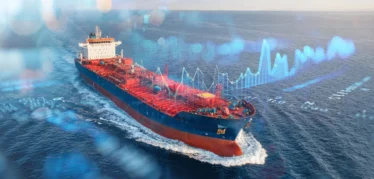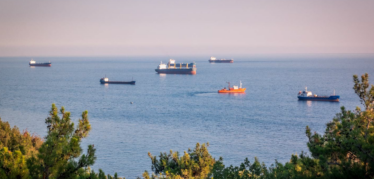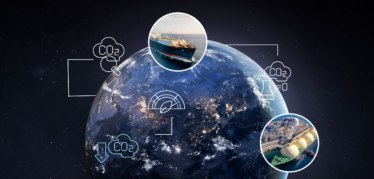The commercial platform has what is arguably one of the most multi-faceted value propositions in the maritime shipping technology landscape. It lives at the nexus of some of the maritime shipping ecosystem’s most critical strategic objectives—from data standardization to comprehensive visibility, environmental sustainability, and risk management. But the driving forces behind adoption are numerous, and they can be championed by a variety of decision makers inside the organization.
What matters most to your organization? What will prompt and accelerate digital adoption? And perhaps most importantly, how will you measure success? In this blog post, we’ll answer these important questions through the eyes of key maritime shipping decision makers.
Owner-Operator & Commodity Trader Stakeholders
In this vertical, we’ll take a closer look at the Head of Digitalization and the Global Head of Freight, two personas that play a critical role in the organization’s decision to adopt a new commercial solution.
1. Head of Digitalization
What matters most? Charged with charting the digital future of the maritime shipping organization, the Head of Digitalization is focused on guiding the transformation of a historically analog business into one poised for greater efficiency, continuity, agility, and data-driven insight. With uncertainty amid so many digital advancements, the Head of Digitalization must ensure the organization’s digital foundation is firm and flexible. Factors like security, solution access, and system integrations have never mattered more.
What drives change? Some of the key drivers of change are:
- The need to mitigate redundant, error-prone manual workflows and unstandardized processes.
- Ensuring reliable, immediate access for all stakeholders.
- The need for stronger system integrations and standardized data.
- A more strategic approach to interpreting and using information.
- Richer system support and continual platform innovation.
What is the impact? For the Head of Digitalization, the impact of a dynamic commercial solution plays out in measurable and immeasurable ways. Measurable KPIs take the form of greater profitability, reduced costs, fewer errors, and a variety of other strategic objectives that are informed by data analysis. But immeasurable benefits take the form of more satisfied and empowered stakeholders, greater agility, and the confidence that the organization is ready for the next wave of change.
2. Global Head of Freight
What matters most? The global shipping of bulk commodities involves a complex intersection of modalities, expectations, timelines, and relationships. The Global Head of Freight is tasked with balancing these often-competing realities in an ever-changing market. Factors like increased volatility, outsized risk, and financial performance are front of mind, and can each be addressed through a dynamic commercial solution.
What drives change? Some of the key drivers of change are:
- The need for complete, contextual market insight.
- More proactively addressing outsized market risk.
- Specific objectives around profitability and reduced costs.
- The desire for a more complete view of commercial performance.
What is the impact? For the Head of Freight, the measures of success for a commercial maritime shipping solution manifest themselves in a very tangible way. Specific metrics include freight exposure by voyage and vessel, bunker exposure by voyage and vessel, freight and bunker costs, and mark-to-market performance.
Tonnage Charterer Stakeholders
In this vertical, we’ll explore the Maritime Logistics Professional and the Head of Supply Chain, two roles that recognize the marine modality’s importance in the global supply chain.
1. Head of Marine Logistics
What matters? As the leader of the marine link in the global supply chain, the Marine Logistics Professional is focused on streamlining the nominations process, maintaining consistent communication with other stakeholders, and standardizing voyage planning workflows. The operational goals are complemented by a strong focus on cost containment within the marine supply chain.
What drives change? Some of the key drivers of change are:
- The desire for greater visibility into marine freight requirements across production sites.
- The need for full visibility over marine cargoes and costs.
- A need to cut down on emails and streamline voyage planning.
- Market visibility and benchmarks to inform negotiations and freight contracts.
What is the impact? For the Head of Marine Logistics, key measures of success include strategic management of demurrage and other marine related expenses, as well as a significant decrease in the time required to nominate and plan and appropriate voyage for marine cargoes.
2. Global Supply Chain Leader
What matters? The efficiency of the global supply chain is critical to the success of any commodities producing business, and the Global Supply Chain Leader is focused on empowering the business to make better decisions and continually surface opportunities for improvement. This persona recognizes the essential role of the marine modality and understands the pervasive lack of visibility that plagues marine logistics operations.
What drives change? Some of the key drivers of change are:
- The need for full visibility into marine contracts and cargoes.
- The desire to empower marine stakeholders to perform their very best.
- A strategic desire to advance marine related sustainability efforts.
- Specific metrics to illuminate opportunities for cost containment and efficiency.
What is the impact? For the Global Supply Chain Leader, marine supply chain costs matter and so do emissions. For a commercial solution to be successful, it will need to demonstrate powerful cost reductions as well as a simultaneous reduction in the business’s environmental impact.
Universal Stakeholders
While owner-operators, commodity traders, and tonnage charterers are highly unique in their stakeholders and requirements, they share some things in common—like a commitment to achieving greater sustainability in their daily workflows. The Sustainability Manager is leading this effort across verticals.
1. Head of Sustainability
What matters? Sustainability managers are focused on shaping a greener future for their businesses and the industry as a whole. With 95% of maritime professionals considering decarbonization a top priority for their organizations, Sustainability Managers aim to empower decision makers with the ability to understand the environmental impact of each and every decision.
What drives change? Some of the key drivers of change are:
- Adhering to industry standards and regulations like the Sea Cargo Charter and IMO 2030.
- Gaining an understanding of each decision’s environmental impact.
- The ability to systematically track bunkers and voyage emissions.
- Market data that can be harnessed to shape more efficient voyages.
What is the impact? For the Sustainability Manager, a measurable reduction in emissions is the most important objective of a new commercial solution. This objective is multi-faceted, and can be segmented by voyage, vessel, carrier, cargo, and more to inform broader sustainability strategies.
Drive Transformative Advantages with the Veson IMOS Platform
Entirely marine-focused and equipped with capabilities for organizations on both sides of the marine contract, the Veson IMOS Platform enables organizations to optimize decision making and achieve their key strategic objectives. By delivering comprehensive solutions to serve each stakeholder’s needs in a highly specific and value-driven way, VIP empowers your organization with the efficiency and connectivity needed to overcome complex challenges and maximize long-term success. Ready to see what VIP can do for your business? Request a demo to learn more.



 Antoine Grisay
Antoine Grisay
 Josh Luby
Josh Luby
 Bobby Morse
Bobby Morse